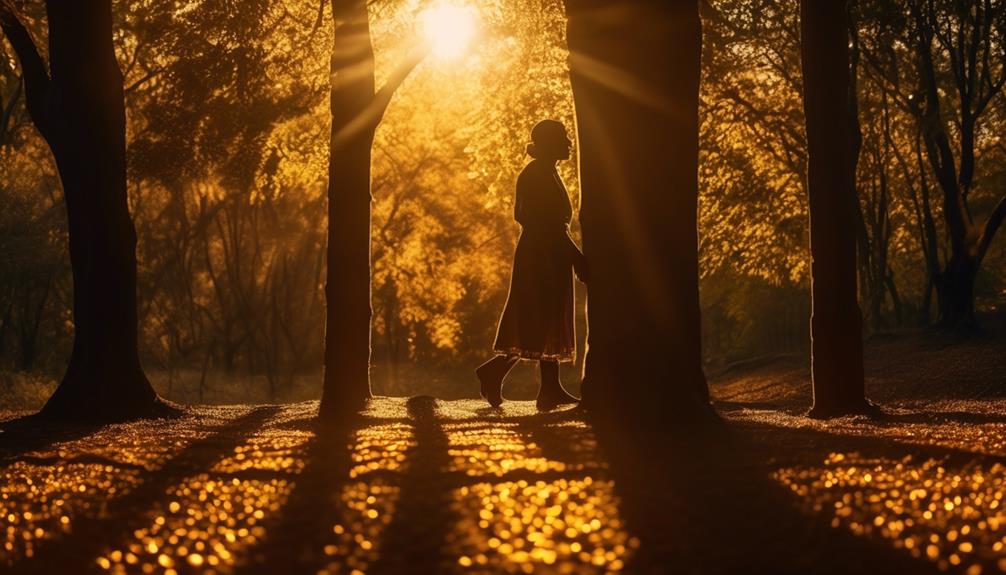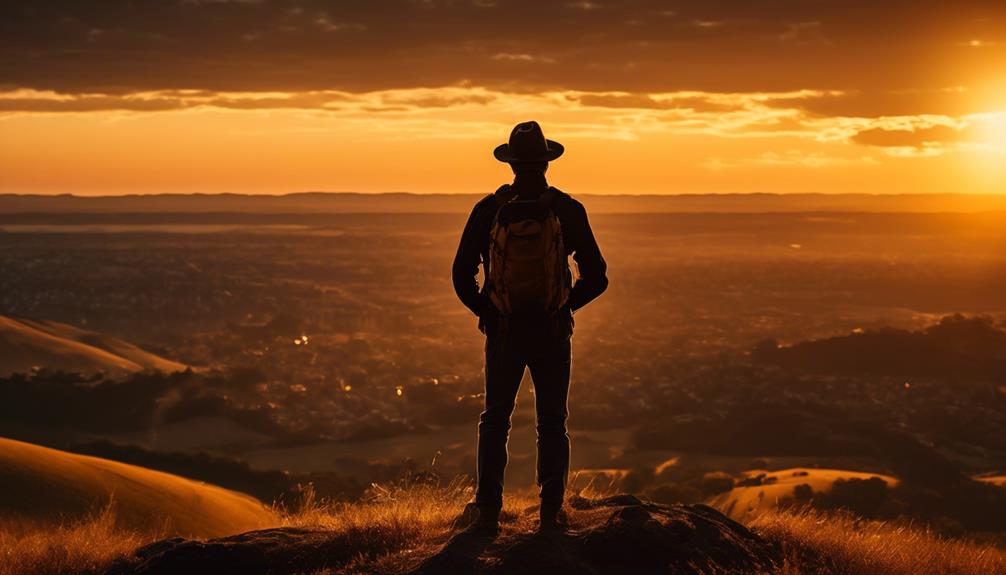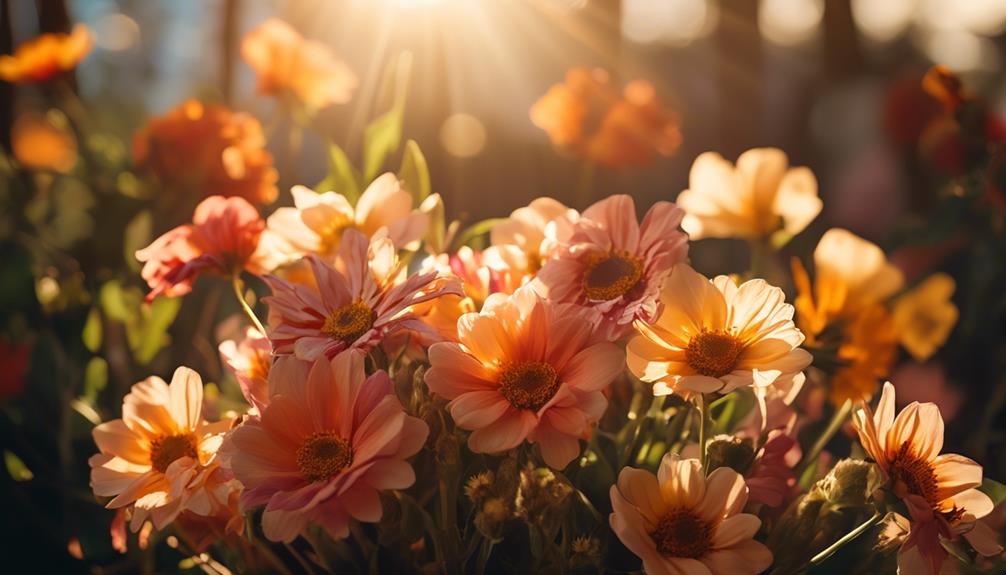Please note this post may contain affiliate links picked by me (Jay) that I have deemed may be of interest or relevant to you the reader of this.
These links do not affect the cost of the thing if you decide to purchase but i may get a little money if you choose to purchase.
For more information on my affiliate link policy click here.
Like a painter with a brush dipped in liquid gold, the secret to capturing great photos with sunlight lies in the delicate dance between the photographer and the ever-changing rays of the sun.
As I step into this world of light and shadows, I am filled with a sense of wonder and curiosity. How can I harness the power of the sun to create images that evoke emotion and tell a story? How can I transform a simple snapshot into a work of art that resonates with the viewer?
In the pursuit of these answers, I invite you to join me on a journey where we uncover the secrets to mastering sunlight and creating truly breathtaking photographs.
Key Takeaways
- Natural light is essential for capturing breathtaking photos as it adds depth, drama, and emotion to images.
- The golden hour, which occurs during sunrise and sunset, is the best time to shoot as it provides soft, diffused light and a warm, golden glow.
- Timing is crucial to capture the enchanting light of the golden hour, so plan your shoots accordingly.
- Choosing the right time and location, mastering exposure and composition, and enhancing golden hour photos through editing techniques are all important factors in creating stunning photographs with sunlight.
Understanding the Importance of Natural Light
Understanding the importance of natural light is crucial for capturing breathtaking photos that truly come to life. When it comes to photography, light is everything. It's the foundation upon which a great photo is built. Natural light has the power to transform an ordinary scene into something extraordinary, adding depth, drama, and emotion to your images.
One of the key benefits of natural light is its ability to create captivating shadows. Shadows add dimension and texture to a photograph, making it more visually interesting. They can create depth and give a sense of realism to your images. By understanding how to use natural light to your advantage, you can capture shadows that add a sense of drama and intrigue to your photos.
Another advantage of natural light is its ability to enhance colors. When the sun is low in the sky, during the golden hour, the colors in your photos become more vibrant and saturated. The warm, golden light can bring out the rich tones and hues in your subject, making them appear more vibrant and alive. Natural light also has the ability to create soft, diffused lighting, which can enhance the colors and details in your photos, resulting in a more visually pleasing image.
Choosing the Right Time of Day
To capture the best photos with sunlight, it's essential to carefully choose the right time of day. As a photographer, I've learned that the time of day greatly affects the quality of my shots. The golden hour, which occurs during sunrise and sunset, is widely regarded as the best time to shoot. During this time, the sunlight is softer and creates a warm, golden glow that adds a magical touch to your images. The long shadows also add depth and dimension to your subjects, making them more visually interesting.
When shooting during the golden hour, it's important to adjust your camera settings accordingly. Set your aperture to a wide f-stop, such as f/2.8 or f/4, to achieve a shallow depth of field and create a dreamy, blurred background. Additionally, use a low ISO setting to avoid noise in your photos. By taking advantage of the soft, diffused light during this time, you can capture stunning images with minimal effort.
After capturing your shot, editing techniques can further enhance the beauty of your photos. One popular technique is adjusting the white balance to achieve the desired mood. For example, warming up the temperature can give your image a cozy and inviting feel, while cooling it down can create a more serene and tranquil atmosphere. Additionally, playing with contrast and saturation can make your colors pop and add visual interest to your photos.
Finding the Perfect Location
As I continue to explore the art of capturing great photos with sunlight, one crucial aspect that I've discovered is the importance of finding the perfect location. When it comes to photography, the right location can make all the difference in creating stunning images that truly capture the essence of the moment.
Here are a few key factors to consider when searching for the ideal backdrop for your sunlight photography:
- Scenic Beauty: Look for locations that offer breathtaking natural landscapes or architectural wonders. Whether it's a majestic mountain range, a serene beach, or a charming cityscape, a visually appealing backdrop can elevate your photos to a whole new level.
- Lighting Conditions: Pay attention to how the sunlight interacts with the environment in different locations. Experiment with various angles and positions to see how the light plays off different surfaces. This will allow you to capture those mesmerizing sun flares and create a sense of depth and drama in your photos.
- Accessibility: Consider the accessibility of the location. Will you be able to reach it easily, or will it require a long hike or trek? Factor in the time and effort it will take to get there, as well as any permits or permissions that might be required.
- Uniqueness: Seek out locations that offer a unique and distinctive atmosphere. Look for hidden gems or overlooked spots that haven't been extensively photographed. This will give your photos a fresh perspective and make them stand out from the crowd.
Finding the perfect location for your sunlight photography can be a thrilling adventure. It's about exploring new places, capturing the beauty of nature, and pushing the boundaries of creativity. So go out there, discover hidden treasures, and let the sunlight guide you to create truly remarkable images.
Mastering Exposure and Composition
I've discovered that mastering exposure and composition is the key to bringing out the full potential of sunlight in my photos. It's not just about finding the perfect location; it's about knowing how to capture the light and use it to create stunning images.
One of the ways I improve my lighting techniques is by understanding exposure. By adjusting the aperture, shutter speed, and ISO, I can control the amount of light that enters the camera and create the desired effect. This allows me to highlight the details in the shadows and prevent overexposure in the highlights, resulting in a well-balanced exposure.
Another important aspect of mastering exposure and composition is utilizing leading lines. Leading lines are elements in a photograph that guide the viewer's eye towards the main subject or point of interest. They can be found in various forms, such as roads, fences, or even natural elements like rivers or branches. By incorporating leading lines into my composition, I can create a sense of depth and draw the viewer's attention to the focal point of the image. This technique not only adds visual interest but also helps to create a more dynamic and engaging photograph.
When it comes to composition, I also consider the rule of thirds. By dividing the frame into a grid of nine equal parts, I can place the main subject or points of interest along the gridlines or at the intersections. This creates a more balanced and visually appealing composition, as it avoids placing the subject directly in the center of the frame. By experimenting with different compositions and angles, I can create unique and captivating images that truly showcase the beauty of sunlight.
Mastering exposure and composition takes practice and experimentation, but the results are well worth it. By improving my lighting techniques and utilizing leading lines, I can capture the full potential of sunlight in my photos and create images that are innovative, creative, and truly breathtaking.
Harnessing the Power of Golden Hour
The golden hour, with its warm and radiant glow, holds the key to unlocking the true magic of sunlight in photography. It's that magical time of day when the sun is low on the horizon, casting a soft, golden light that bathes everything it touches in a warm and ethereal glow. As a photographer, capturing the beauty of the golden hour can elevate your photos to a whole new level.
Here are some golden hour photography tips to help you capture the magic:
- Timing is everything: The golden hour occurs twice a day, just after sunrise and just before sunset. Keep an eye on the clock and plan your shoots accordingly to make the most of this enchanting light.
- Embrace the golden glow: The warm, soft light of the golden hour can create a beautiful and dreamy ambiance in your photos. Look for subjects that will be enhanced by this magical light, such as landscapes, portraits, or even architecture.
- Experiment with composition: The golden hour provides the perfect opportunity to play with composition. Use the soft, directional light to create interesting shadows and highlights, or frame your subject against the golden sky for a breathtaking effect.
- Don't forget the details: While the golden hour is known for its stunning landscapes, don't overlook the smaller details. Pay attention to the way the light filters through leaves or dances on water, and capture those intricate moments that make the golden hour truly special.
Once you've captured the magic of the golden hour, it's time to enhance your photos with some editing techniques. Adjusting the white balance, boosting the vibrance, and tweaking the exposure can all help to bring out the full potential of your golden hour shots. Experiment with different editing tools and techniques to make your photos truly shine.
Frequently Asked Questions
How Can I Enhance the Natural Light in My Photos During Golden Hour?
Enhancing the natural light in photos during golden hour can make them truly stunning. By strategically positioning your subject, you can capture warm tones and create beautiful shadows that add depth and dimension.
Experimenting with different angles and compositions can help you find the perfect balance between light and shadow. Don't be afraid to play with the light and explore new techniques to create innovative and captivating images that truly stand out.
What Are Some Common Mistakes to Avoid When Choosing the Right Time of Day for Photography?
What if I told you there's a secret to capturing stunning photos with sunlight?
Well, when it comes to choosing the right time of day for photography, there are some common mistakes to avoid. Timing is everything, and understanding the sun's position and angle can make all the difference.
Don't underestimate the power of golden hour or the magic of blue hour. By avoiding these mistakes, you'll be well on your way to creating photos that truly shine.
How Can I Effectively Use Natural Light to Create a Dramatic Composition?
Using natural light to create a dramatic composition is all about harnessing its power and understanding its nuances. By strategically placing reflectors, I can manipulate the light and fill in shadows, adding depth and dimension to my photos. This technique allows me to capture the subject in a captivating and visually striking way.
The interplay between light and shadow creates a sense of drama and intrigue, elevating the overall impact of the composition. It's a thrilling process that constantly pushes the boundaries of my creativity.
Are There Any Specific Camera Settings I Should Use to Capture the Best Exposure in Sunlight?
What camera settings and exposure techniques should I use to capture the best exposure in sunlight?
Well, let me tell you, it's all about finding that perfect balance. You want to make sure you're not overexposing the image, but also not underexposing it.
So, I recommend using a low ISO to reduce noise, a fast shutter speed to freeze the action, and adjusting your aperture to control the amount of light coming in.
Experiment with different settings and see what works best for your desired outcome!
What Are Some Tips for Finding Unique and Lesser-Known Locations That Offer Great Natural Light for Photography?
Finding hidden gems and exploring off the beaten path locations is a thrilling adventure for any photographer. The thrill of discovering unique and lesser-known places that offer great natural light is incomparable.
It's like uncovering a hidden treasure that only you have the privilege to capture. From secluded forests to abandoned buildings, the possibilities are endless.
Conclusion
Capturing captivating photos with sunlight is an art form that requires understanding the importance of natural light. Choosing the right time of day and finding the perfect location are crucial elements. Mastering exposure and composition is also essential. Additionally, harnessing the power of the golden hour can result in stunning images.
By utilizing these techniques, you can transform your ordinary snapshots into extraordinary masterpieces that mesmerize and leave a lasting impression. So go forth and let the sun be your muse. Paint with light and create photographic wonders that will illuminate the world.


